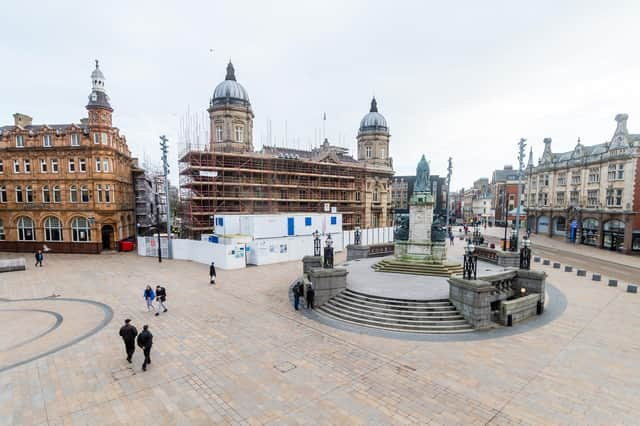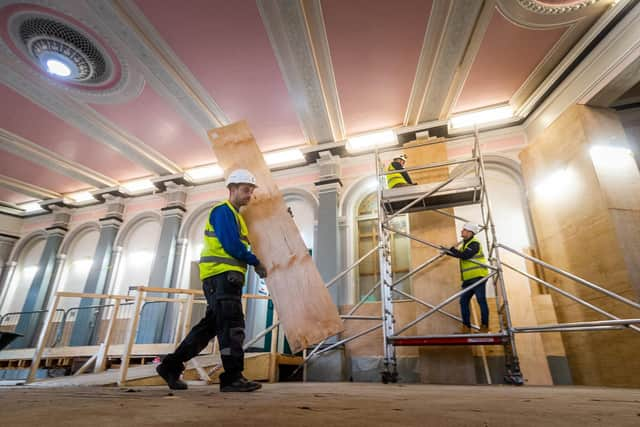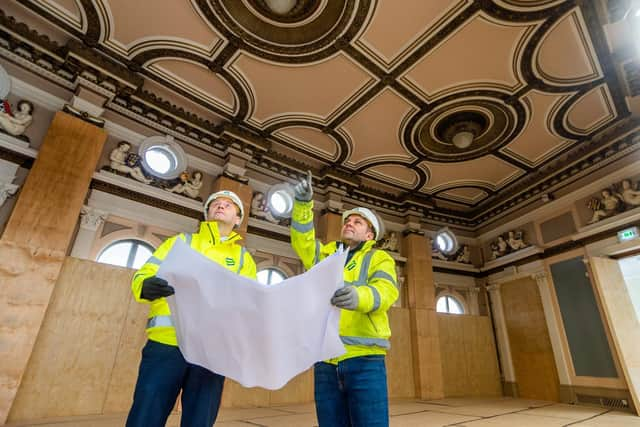'Swimming' whale will be star attraction in Hull museum after £12m revamp


Hull was well known for its whaling museum, and even caught the eye of Herman Melville, who mentioned it in his 1851 bestseller, Moby Dick.
And while its mother’s bones stayed in New York, the 40ft Northern Atlantic right whale crossed the Atlantic and became Hull Maritime Museum’s largest exhibit, beached on the floor and “surrounded by the tools for its destruction”.
Advertisement
Hide AdAdvertisement
Hide AdIt will be the stand-out item - along with a 30-year-old polar bear exhibit, Eric - when the museum reopens in 2025, mounted to look as if swimming, tail up in the air.


The exhibit will be accompanied by interactive features for children, while an adult whale will be projected onto the ceiling.
With three years to go, reporters were given a tour of the museum as it undergoes a £12m transformation, its rooms bare and precious features boarded over, while its 50,000 objects remain safely in storage.
The revamp is part of a £30m tourism project, which will see the country’s last sidewinder trawler, the Arctic Corsair, move to historic dry docks on the River Hull, alongside a state-of-the-art interpretation centre.
Advertisement
Hide AdAdvertisement
Hide AdThe cost is being split 60/40 between Hull Council and the Heritage Lottery Fund, and should, says director of cultural services Simon Green, nearly double visitor numbers to the museum from 80 to 90,000 in 2019 to 150,000.


Many more artefacts will go on show including those connected with the incredible feats of Antarctic survival Hull is connected with, such as John Vincent.
The Hull fisherman was one of five men who Ernest Shackleton picked for a hazardous open boat journey to get help, after their ship the Endurance became trapped in ice in 1915.
Four other city men accompanied the expedition - fourth officer Alfred Cheetham, who crossed the Arctic ice a staggering 14 times before dying in the First World War, firemen William Stephenson and Ernest Holness, and “sooty-faced cook” Charles Green. Green, who in his later years was an attendant in East Park, is still remembered locally.
Advertisement
Hide AdAdvertisement
Hide AdVincent’s ceramic beaker will go on display, and there will be skis, sleigh harness and mittens belonging to Hull crew members who spent two years rescuing Captain Robert Scott after his ship, the Discovery, got stuck in the ice on his first expedition to the South Pole in 1902.
But it will not all be about the past, and a room in the new-look museum will be dedicated to Hull’s contribution to a low carbon future, with investments in offshore wind and other renewable forms of energy.
When the Maritime Museum in Hull reopens in 2025, it will be 50 years since it last had major investment. “It needed revamping and bringing into the 21st century, but also providing access for all,” said Hull Council’s leader Daren Hale. “It will be free and that’s really important for families planning their day out.”
Comment Guidelines
National World encourages reader discussion on our stories. User feedback, insights and back-and-forth exchanges add a rich layer of context to reporting. Please review our Community Guidelines before commenting.
